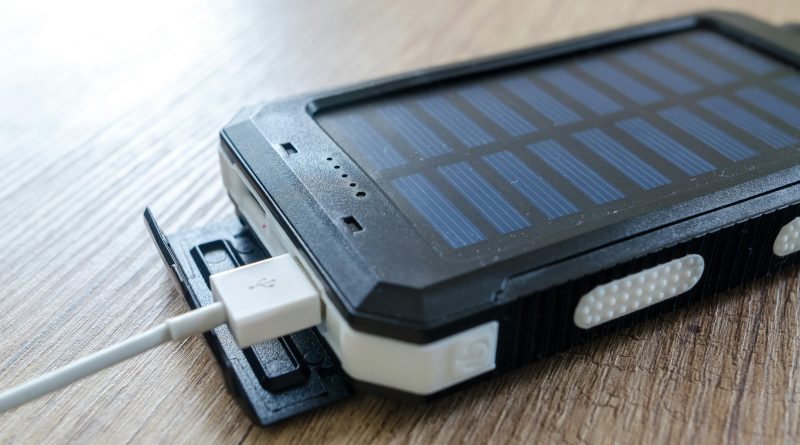Best Solar Chargers in 2025: Top Picks for Sustainable Power Anywhere
In 2025, staying powered off the grid doesn’t mean lugging around clunky battery packs or hunting for wall outlets. Modern solar chargers combine high-efficiency panels, smart charging electronics, and rugged designs to keep your devices juiced on camping trips, beach days, or emergency prep. Below are Mason Rivers’ top six solar chargers—each rigorously tested for capacity, recharge speed, portability, and durability—so you can pick the right model for your adventures.
🌞 Why the Right Solar Charger Matters
Not all solar panels are created equal. The best units deliver enough wattage to meaningfully recharge your phone within a few hours of sunlight, boast portable form factors, and include intelligent power management to protect connected devices. When shopping, focus on:
- Panel Wattage & Efficiency – 10 W+ panels with ≥22 % conversion.
- Battery Integration – On-board batteries (10 000–30 000 mAh) ensure power when the sun dips.
- Output Flexibility – USB-C PD and USB-A Quick Charge ports for simultaneous multi-device charging.
- Durability – IP65-rated build, reinforced corners, and shock-resistant panels.
- Weight & Packability – Foldable designs under 600 g for true portability.
🔌 1. Anker 737 Solar Bank (PowerHouse 24K)
- Panel: 20 W foldable solar array (24 % efficiency)
- Battery: 24 000 mAh with USB-C PD 100 W + two USB-A QC ports
- Weight: 720 g
- Price: ~$199
Why it tops the list: This unit marries a large on-board battery with a high-output solar panel. In full sun, you recoup 10 000 mAh in ~3 hours. The 100 W PD port means you can even top up a laptop during long days outdoors.
Mason’s Take: When weight isn’t your primary constraint but you need real versatility—phone, tablet, and ultrabook—this is the go-anywhere powerhouse.
⚡ 2. Goal Zero Nomad 14 Plus + Venture 30
- Panel: 14 W SunPower cells (23 % efficiency)
- Battery: Venture 30 (27 000 mAh), micro-USB input + dual USB-A outputs
- Weight: 1.1 kg (panel + battery)
- Price: ~$249
Why it stands out: Goal Zero’s ecosystem lets you mix panels and power packs. The Nomad 14 recharges the Venture 30 in ~5 hours of strong sunlight. It’s a modular, upgradeable solution for serious campers.
Mason’s Take: If you plan extended off-grid trips, the ability to swap panels or add more batteries over time makes this a long-term investment.
🌿 3. RAVPower 30000mAh Solar Charger
- Panel: 10 W foldable (22 % efficiency)
- Battery: 30 000 mAh with USB-C PD 18 W + two USB-A QC 3.0 ports
- Weight: 600 g
- Price: ~$89
Why it’s wallet-friendly: Strong capacity, decent solar recharge speed, and versatile ports—all for under $100. A solid entry-level choice when you need reliable backup without splurging.
Mason’s Take: Budget travelers and students will appreciate the low entry price without sacrificing essential features.
🔋 4. BigBlue 28W Solar Charger
- Panel: 28 W tri-fold design (21 % efficiency)
- Battery: No integrated battery—direct device charging only
- Weight: 550 g
- Price: ~$59
Why go battery-free: If you already carry a power bank, adding a high-wattage panel like this lets you top up your bank quickly during daylight hours without the extra weight of another battery.
Mason’s Take: Pair it with your existing 10 000 mAh pack and you’ll never run out of juice on multiday treks.
🏕 5. Nekteck 21W Solar Charger
- Panel: 21 W foldable (23 % efficiency)
- Battery: None—USB-C and dual USB-A direct charge
- Weight: 450 g
- Price: ~$45
Why it’s ideal for hikers: Lace-up loops let you clip it to your backpack. It delivers up to 2 A per port in bright sun—enough for rapid phone recharges on the move.
Mason’s Take: At under half a kilogram, this is the go-to solar panel for ultralight hikers and cyclists.
🌍 6. Eco-Worthy 25W All-Weather Panel
- Panel: 25 W tempered glass (25 % efficiency)
- Battery: No battery, but includes DC output and USB-A ports
- Weight: 1.2 kg
- Price: ~$129
Why it’s built tough: IP67-rated panels and a rugged frame survive harsh conditions. The higher efficiency means faster trickle-charging even in hazy or overcast weather.
Mason’s Take: Adventurers who push into remote or rainy environments will appreciate a panel that keeps working when others falter.
🧠 Mason’s Final Word
The best solar charger for you depends on how you balance capacity, recharge speed, and portability. If you need integrated storage and multi-device outputs, pick a solar bank like Anker 737 or RAVPower 30K. If you already own a power pack, opt for a standalone panel like Goal Zero Nomad 14 or BigBlue 28W. And for durability under extreme conditions, Eco-Worthy’s all-weather panel can’t be beaten. Whatever your choice, harnessing the sun in 2025 means never worrying about a dead battery again.




